30 A-Maize-Ing Thanksgiving Facts You Probably Didn’t Know

Thanksgiving is a special holiday for many reasons—the food, family, and football, to name a few. Less well known, however, are the many fascinating facts behind the holiday’s history, traditions, and myths. The truth is, for many of us, there’s a lot we don’t know about the holiday we celebrate every fourth Thursday in November. So before carving up your family’s turkey this year, take the time to learn some of the most interesting Thanksgiving facts we could find. At the very least, you’ll have some fun (and non-controversial) dinner conversation to contribute.
RELATED: 55 Amazing Fall Facts That Will Make You So Excited for the Season.
Fun Facts About Thanksgiving
1. Felix the Cat was the first balloon in the Macy’s Thanksgiving Day Parade.
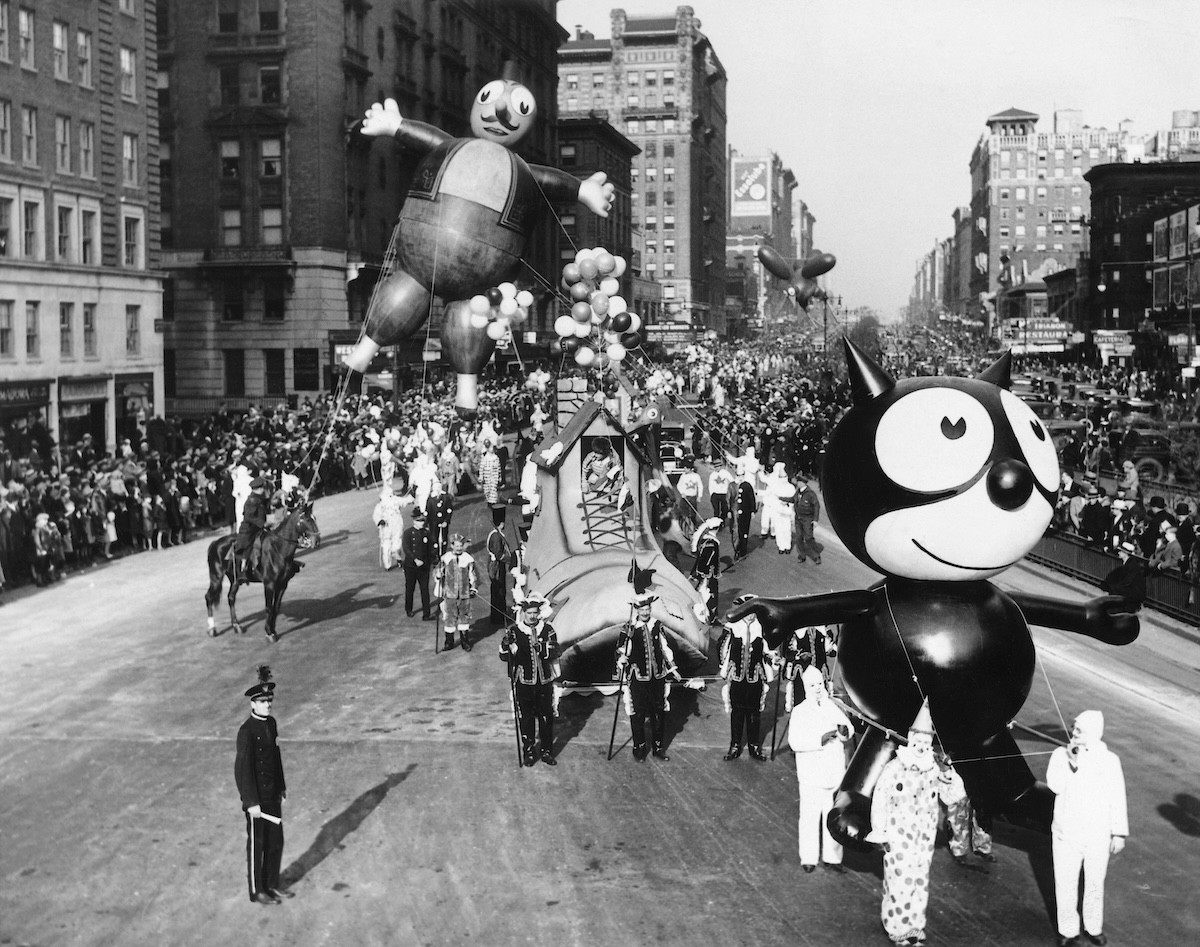
When the first Macy’s Thanksgiving Day parade took place in 1924, the now-famous balloon floats did not exist. Instead, as 6sqft shares, it included floats, live bands, and live animals from the Central Park Zoo—even a procession of elephants!
In 1927, the parade welcomed its first balloon, Felix the Cat. It was created by a famous marionette maker and made by the Goodyear Tire and Rubber Company in Akron, Ohio.
However, during WWII, “the parade was postponed for three years, and many of the balloons were donated to the war effort for rubber,” The New York Times explains. But it wasn’t until 2016 that Felix made his triumphant return.
2. Americans eat 704 million pounds of turkey every Thanksgiving.
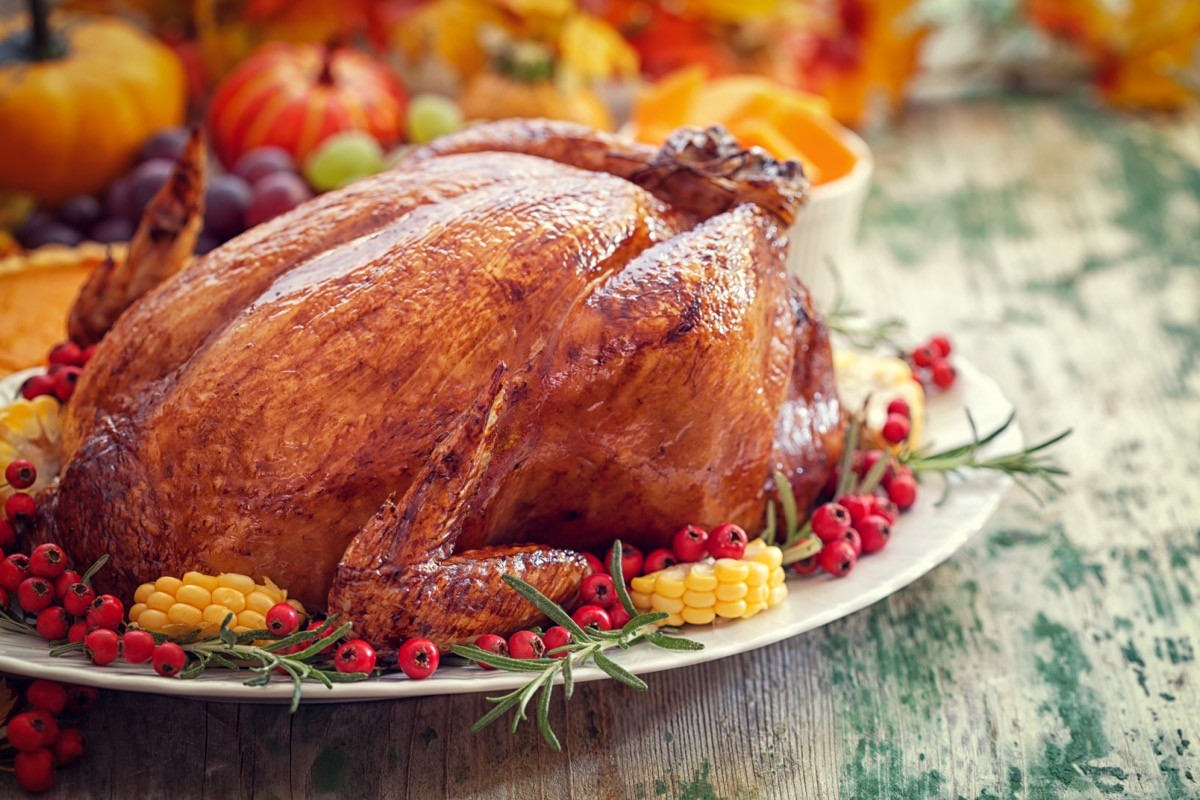
According to the National Turkey Federation, around 44 million turkeys were served at Thanksgiving in the United States in 2017. That’s compared to 22 million pounds at Christmas and 19 million at Easter. The average weight of each, meanwhile, was 16 pounds, which means we’re gobbling up 704 million pounds of turkey across the country.
3. The Butterball hotline answers 100,000 turkey-related questions every year.
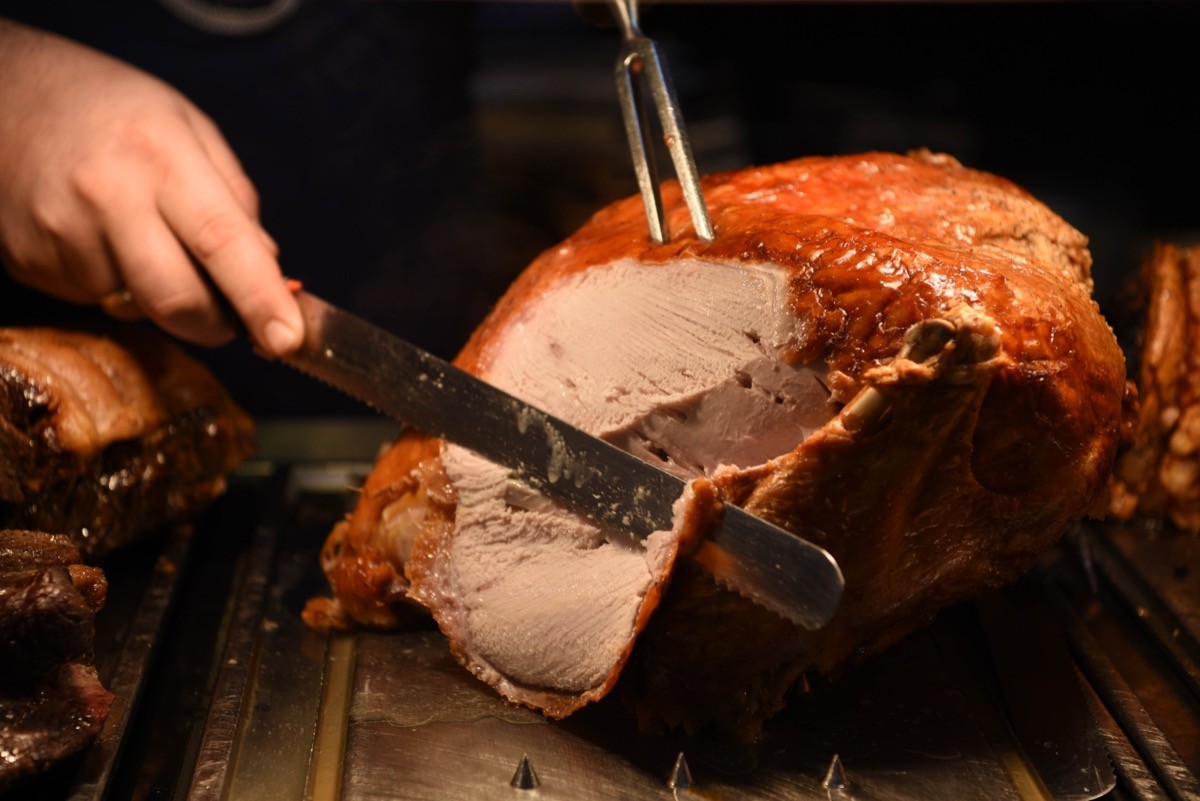
Butterball, a popular turkey company, opens a turkey hotline each November and December to answer any turkey-related questions you may have. Founded in 1981, the Turkey Talk Line went from receiving a modest 11,000 questions that first year to answering more than 100,000 questions across the U.S. and Canada every holiday season.
4. Calvin Coolidge was given a live raccoon one Thanksgiving.
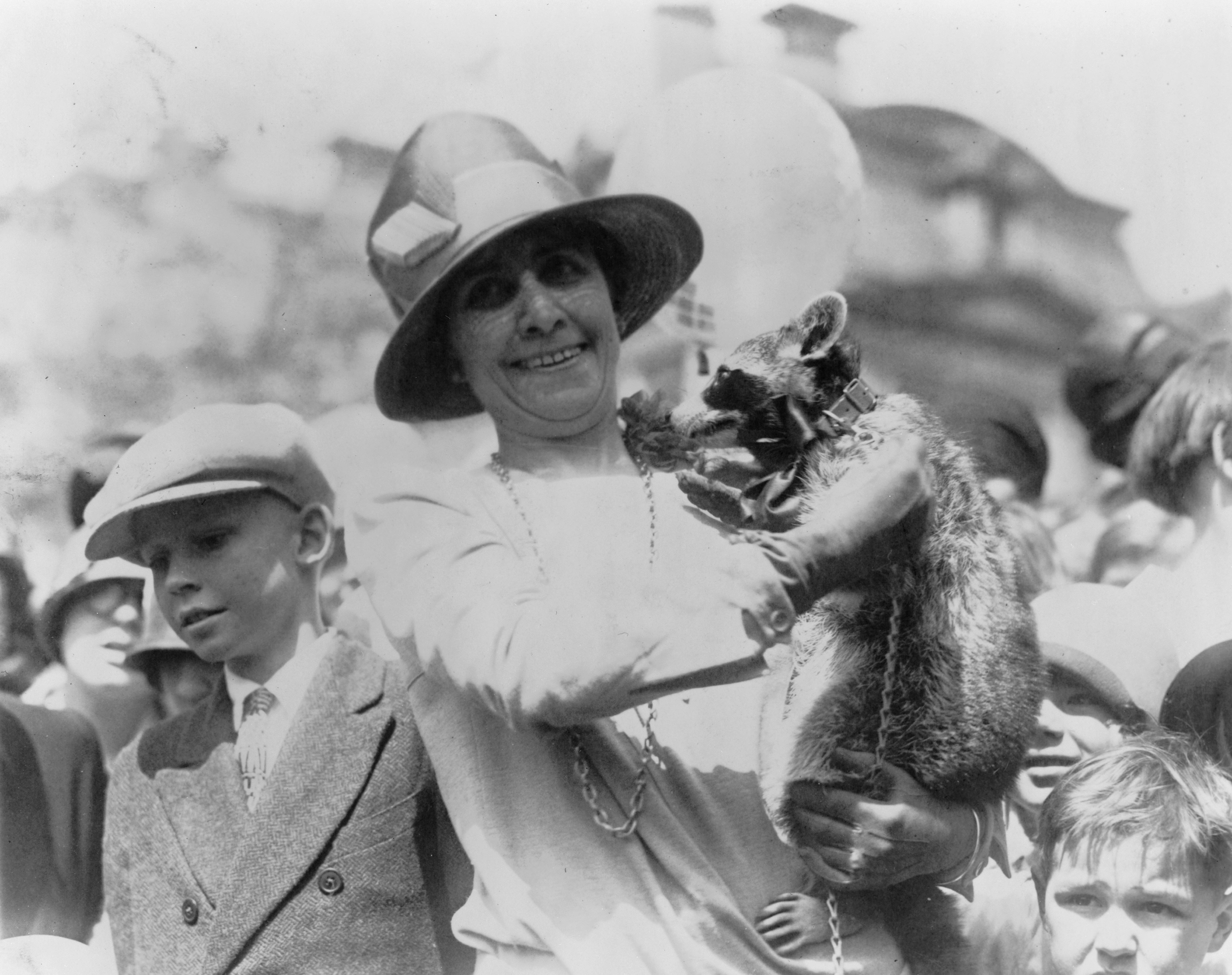
In 1926, President Calvin Coolidge was gifted a live raccoon, which was intended to be on the table instead of a turkey for the First Family’s Thanksgiving meal. He and First Lady Grace Coolidge weren’t inclined to eat the masked creature, however. Instead, they adopted the raccoon, gave her the name Rebecca, and kept her as a White House pet.
5. Native Americans had many uses for the cranberry.
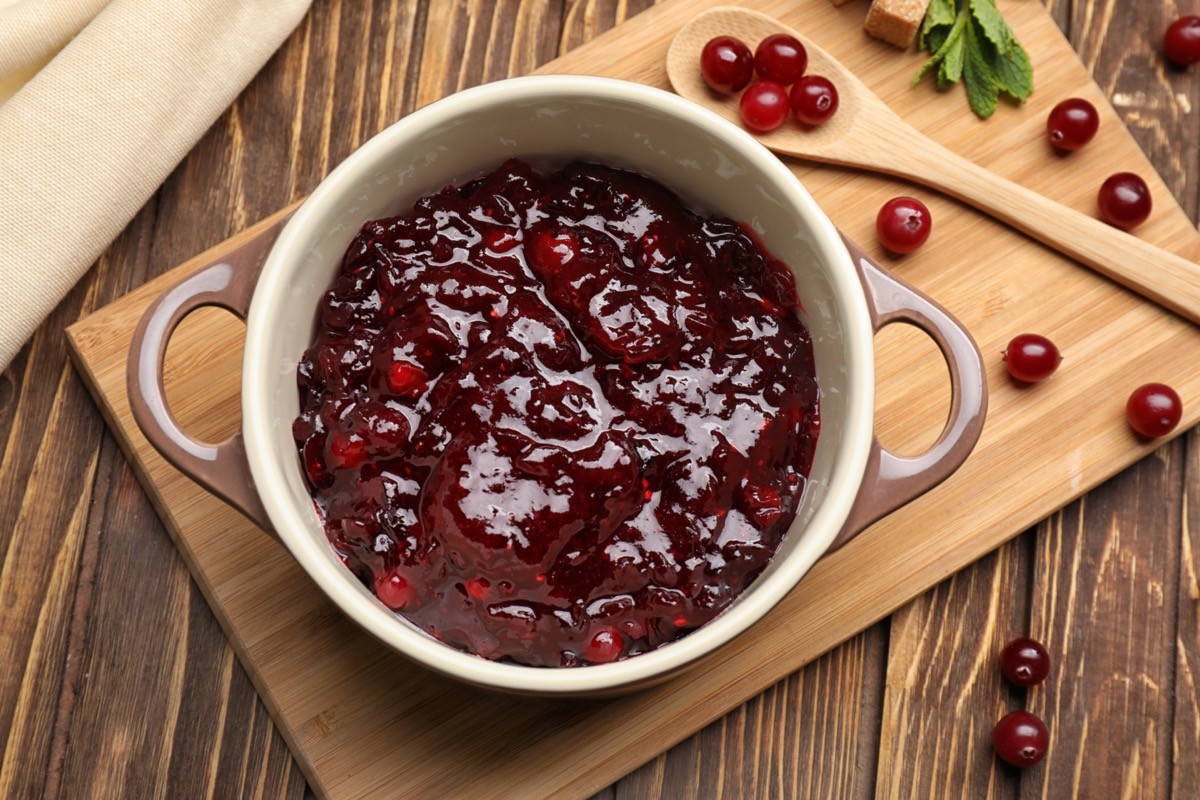
Long before homemade and canned cranberry sauce became a traditional Thanksgiving meal, indigenous Americans had many other uses for the small red fruit. Not only did they eat cranberries fresh and use them as an ingredient in other foods, but native communities also used cranberries to heal wounds and dye fabrics.
RELATED: 85 Hilarious Thanksgiving Jokes You’ll Gobble Right Up.
6. But cranberry sauce is the most hated Thanksgiving dish.
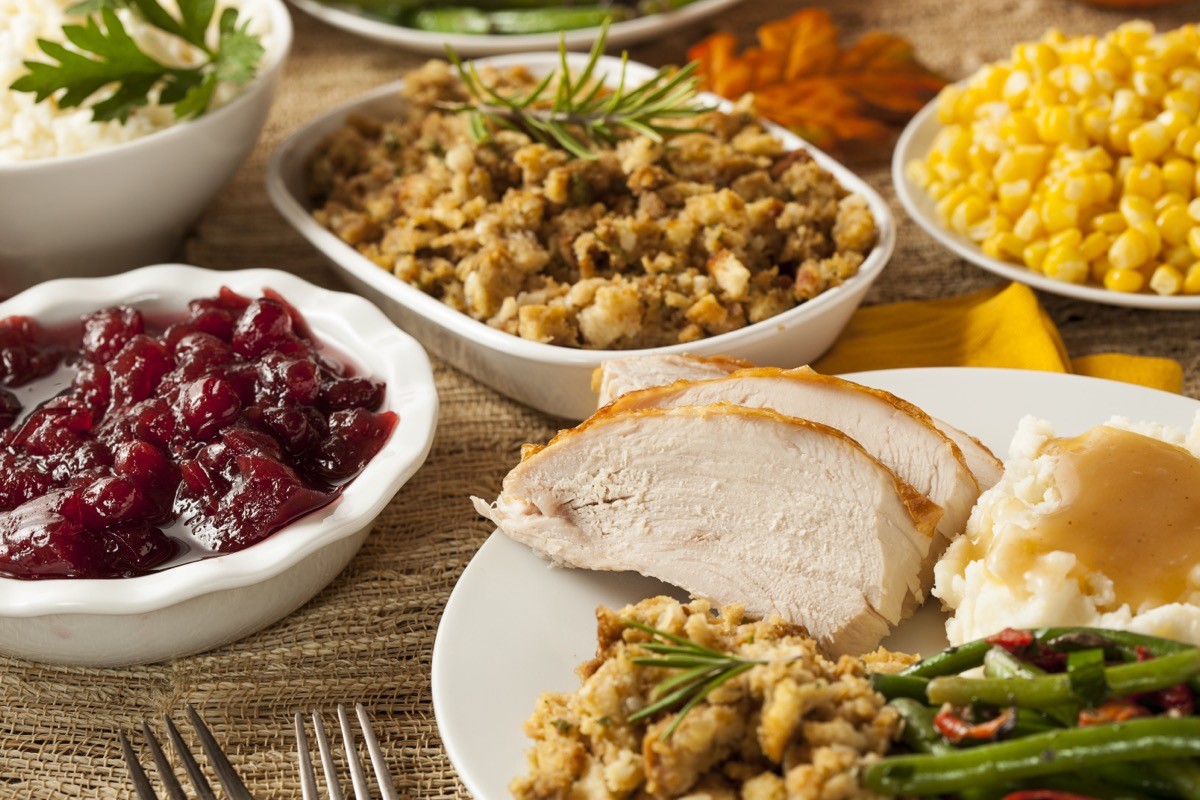
However, it seems that cranberry sauce didn’t age well. According to a 2024 survey conducted by The Harris Poll on behalf of Instacart, cranberry sauce is the least popular Thanksgiving dish. It’s followed by green bean casserole, roasted autumn vegetables, pecan pie, and sweet potatoes or yams.
7. The day after Thanksgiving is the busiest day of the year for plumbers.

You’ve heard of Black Friday, but have you heard of Brown Friday? As Best Life previously reported, the day after Thanksgiving is the busiest day of the year for plumbers.
“The day after Thanksgiving is traditionally busy for plumbers due to the combination of large family gatherings, extensive cooking, and the increased use of kitchen and bathroom facilities,” Mark Morris, a master plumber and consultant for Deluxe Plumbers, a Texas-based plumbing company, told Best Life. “Many plumbing issues arise from the disposal of inappropriate materials down sinks and toilets. Grease, food scraps, and non-flushable items often cause clogs and backups during this time.”
8. Female turkeys don’t gobble.
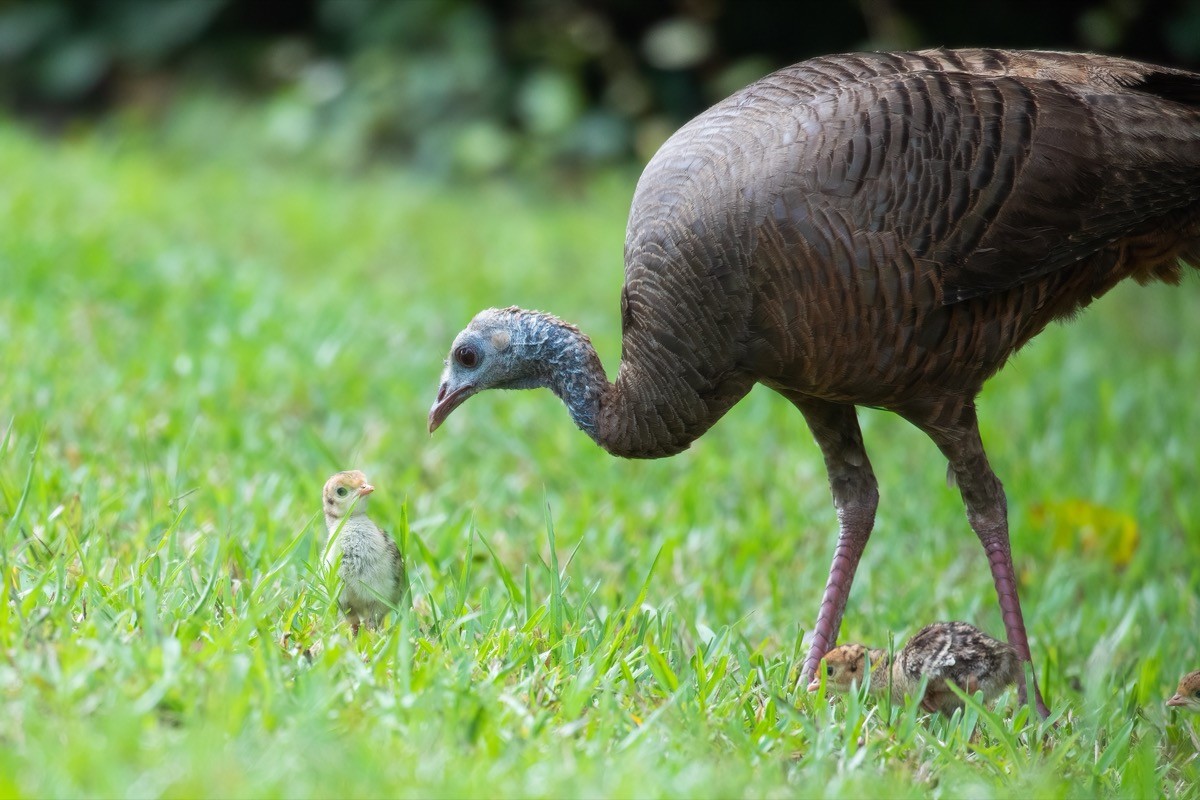
You probably associate turkeys with a “gobble” sound, but only male turkeys actually emit that call—which is why they’re known as gobblers. Females and males cackle, purr, and yelp, depending on the situation.
9. Frozen had the biggest Thanksgiving opening of any movie.
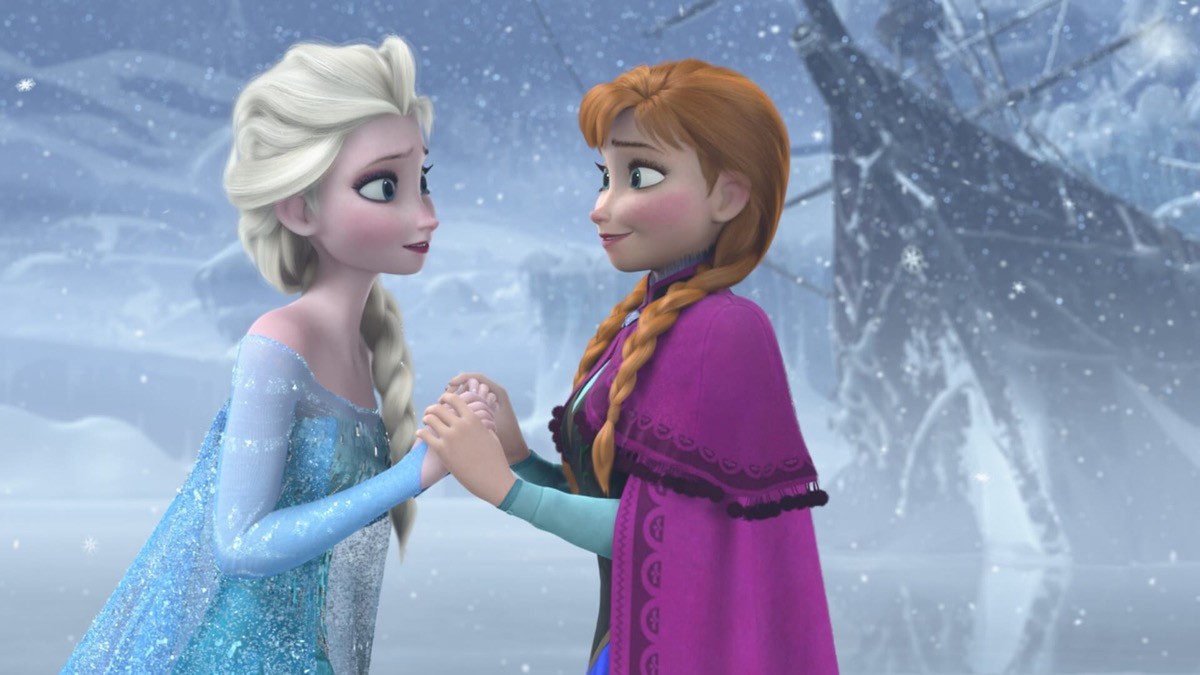
Thanksgiving is a big weekend for movie releases, especially flicks the whole family can go out and enjoy together. As of today, the 2013 Disney animated musical Frozen is the number-one Thanksgiving release of all time, pulling in $67 million domestically over three days, according to Box Office Mojo.
It’s followed by 1999’s Toy Story 2 ($57M), 2016’s Moana ($56.6M), 2018’s Ralph Breaks the Internet ($56M), and 2017’s Coco ($50.8M). In fact, all but one of the top 10 Thanksgiving movies were released by Disney.
10. “Jingle Bells” was originally a Thanksgiving song.

“Jingle Bells,” the classic Christmas song written by James Lord Pierpont in 1857, wasn’t created as Christmas carol, as The Washington Post explains. Originally titled “One Horse Open Sleigh,” the ditty was meant to be sung on Thanksgiving. When it was reprinted in 1859, however, the name was changed to “Jingle Bells, or the One Horse Open Sleigh,” and was prescribed for Christmas.
RELATED: The 8 Best Thanksgiving Movies to Watch This Year.
11. FDR once moved Thanksgiving up a week.
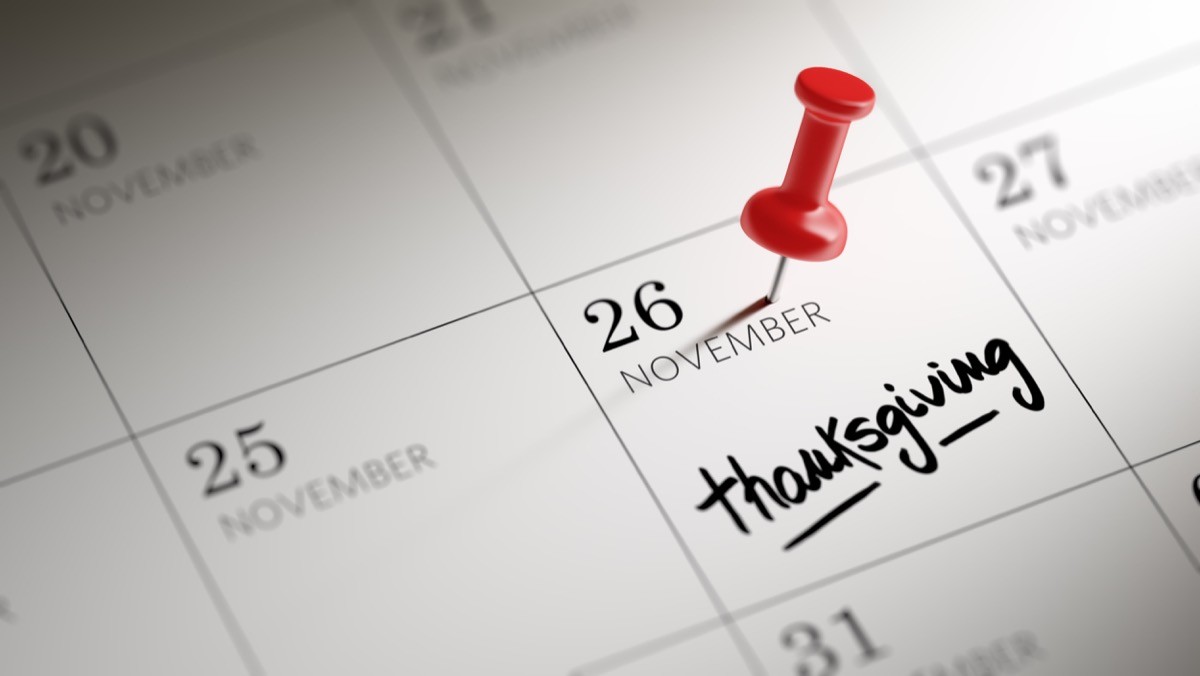
In the midst of the Great Depression, President Franklin D. Roosevelt moved Thanksgiving up one week to allow more time for shopping before Christmas, Vox reported. Otherwise, it would have fallen on Nov. 30. The move sparked intense public reaction, though none as memorable as the stunt pulled by Atlantic City’s then-mayor, C.D. White.
In a public statement issued the day before the new Thanksgiving as designated by Roosevelt, White announced that his city would celebrate two days of thanks and that the earlier date would be known as “Franksgiving.”
12. The first Thanksgiving celebration lasted three days.
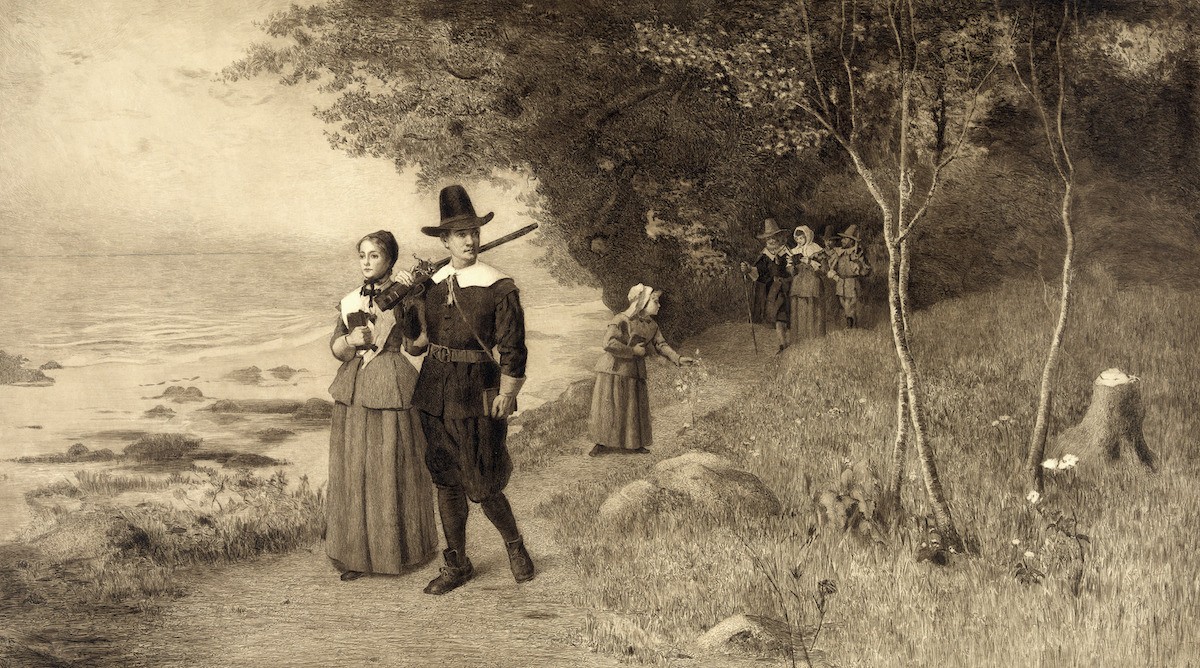
The event commonly referred to as the first Thanksgiving was celebrated in October 1621. It was organized by Governor William Bradford of Plymouth, Massachusetts, to celebrate the recent immigrants’ first successful corn harvest in the New World. While the meal lacked much of what is now common Thanksgiving fare—there’s no record of turkey being served, for example—there were at least five deer carcasses present, and the event lasted a full three days.
13. The woman who reinstated Thanksgiving as a national holiday also wrote “Mary Had a Little Lamb.”
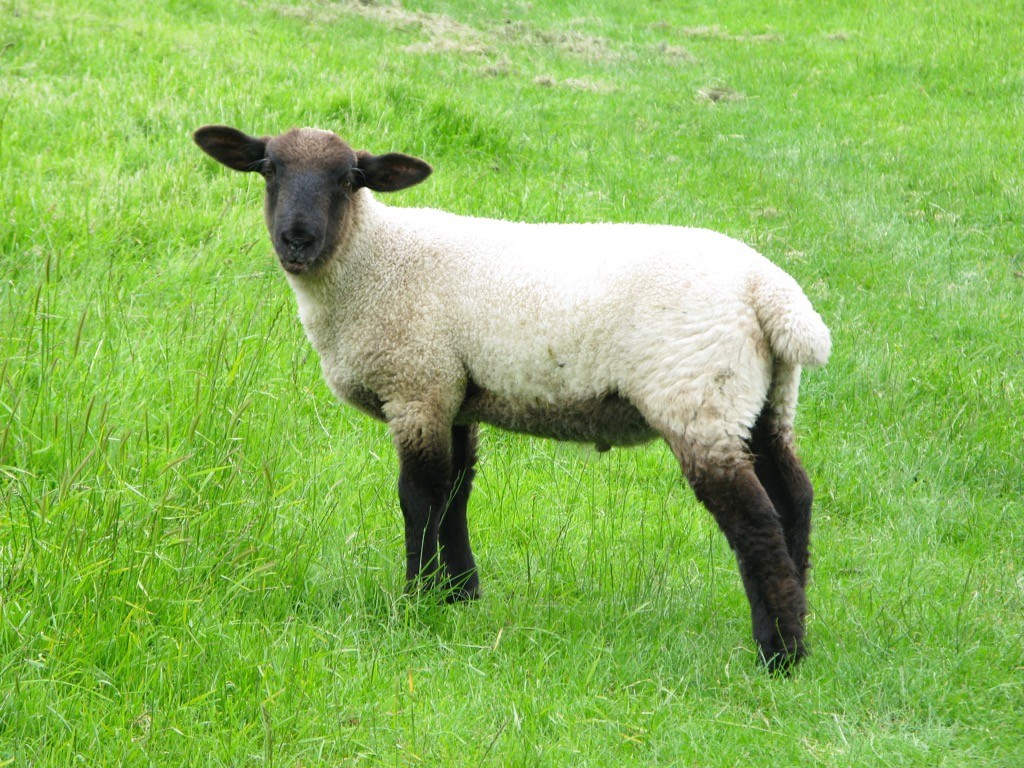
Sarah Hale is known as the “Mother of Thanksgiving” because, at a time when the holiday was only celebrated in the Northeast, she spent four decades campaigning for a national day of thanks. In 1863, she finally persuaded then-President Abraham Lincoln to reinstate the holiday nationwide. In addition, Hale was also a successful editor and poet, penning the famous song “Mary Had a Little Lamb” and retiring at the ripe age of 90.
14. George H.W. Bush was the first President to officially “pardon” a turkey.
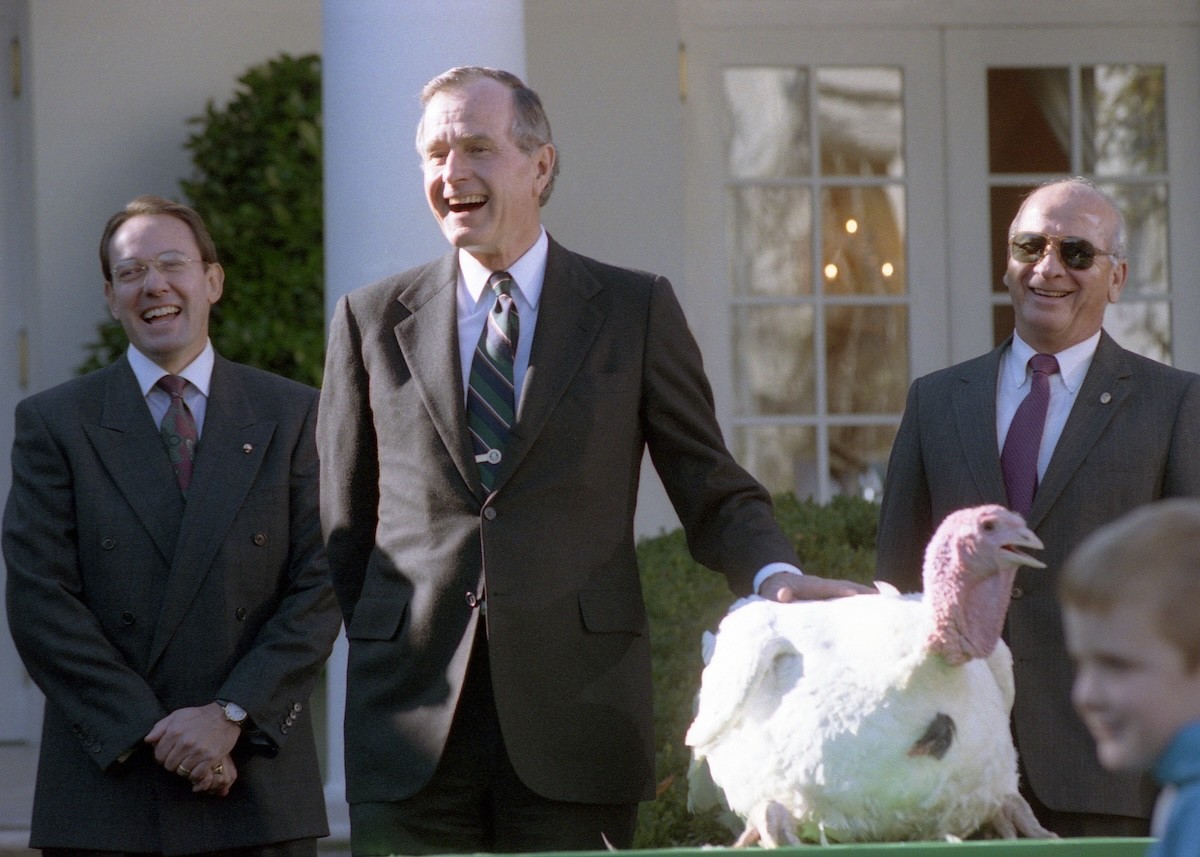
The tradition of U.S. presidents receiving turkeys as gifts can be traced back to the 1870s, but it was Harry S. Truman who became the first to receive one from the Poultry and Egg National Board and the National Turkey Federation in 1947. It was intended, perhaps, as a peace offering by the poultry industry after egg growers sent crates of live chickens to the White House labeled “Hens for Harry,” an act of protest against the president’s short-lived encouragement of “poultry-less Thursdays.”
And though the Truman Library & Museum disputes that he was the first to “pardon” a presidential turkey, a murky tradition of presidents receiving—but not eating—turkeys began. It continued under the administrations of Kennedy, Nixon, Carter, and Reagan.
In 1989, following this tradition, the first official turkey “pardon” was granted by George H.W. Bush. With animal rights activists standing nearby, the president quipped that “this fine tom turkey…will not end up on anyone’s dinner table, not this guy—he’s granted a presidential pardon as of right now.” The rest, as they say, is history.
15. But pardoned turkeys live great lives.
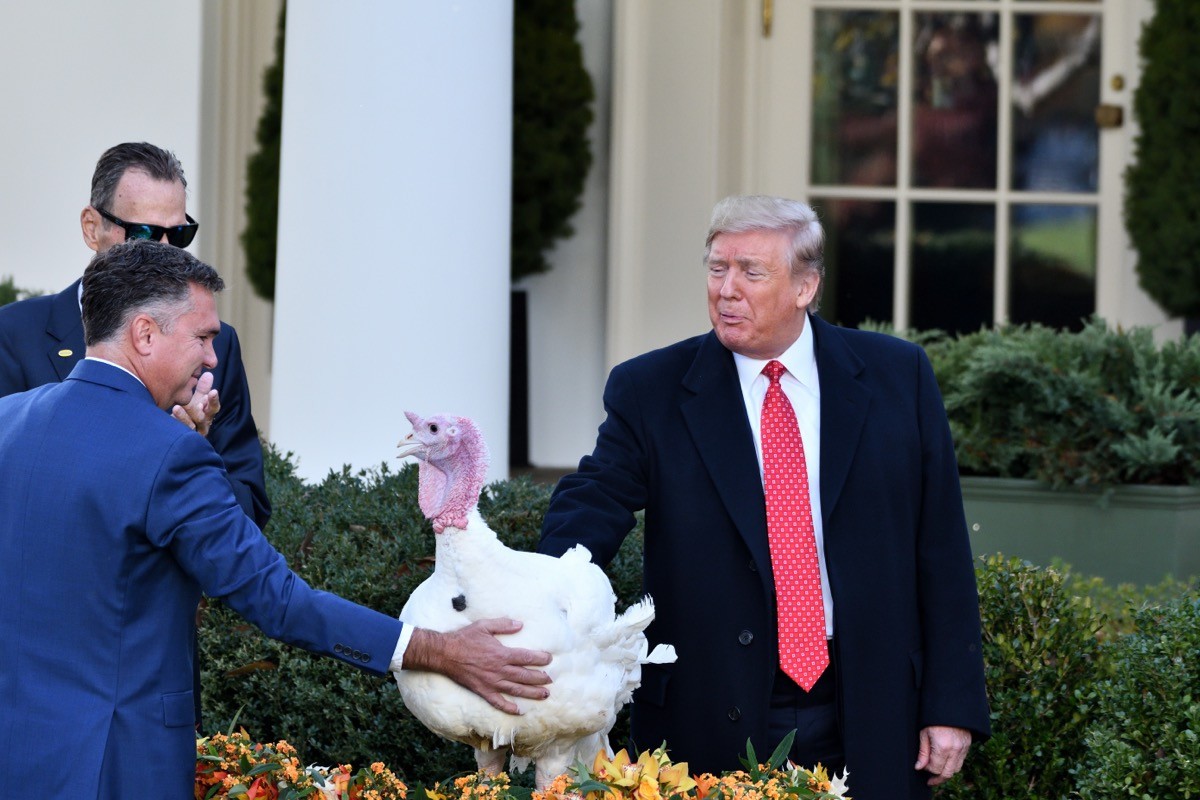
Once these birds get their pardon, they are typically brought to the Frying Pan Farm Park in Fairfax County, Virginia to live out the rest of their long, happy lives, CNN notes. A few lucky turkeys have gotten to embark on even more exciting adventures. A couple were sent to Disneyland and Walt Disney World to live out their retirement. And others have been invited to participate in our annual Thanksgiving parades over the years.
RELATED: 70 Fun Christmas Facts to Get You in the Holiday Spirit.
16. Canada celebrates a totally different Thanksgiving.
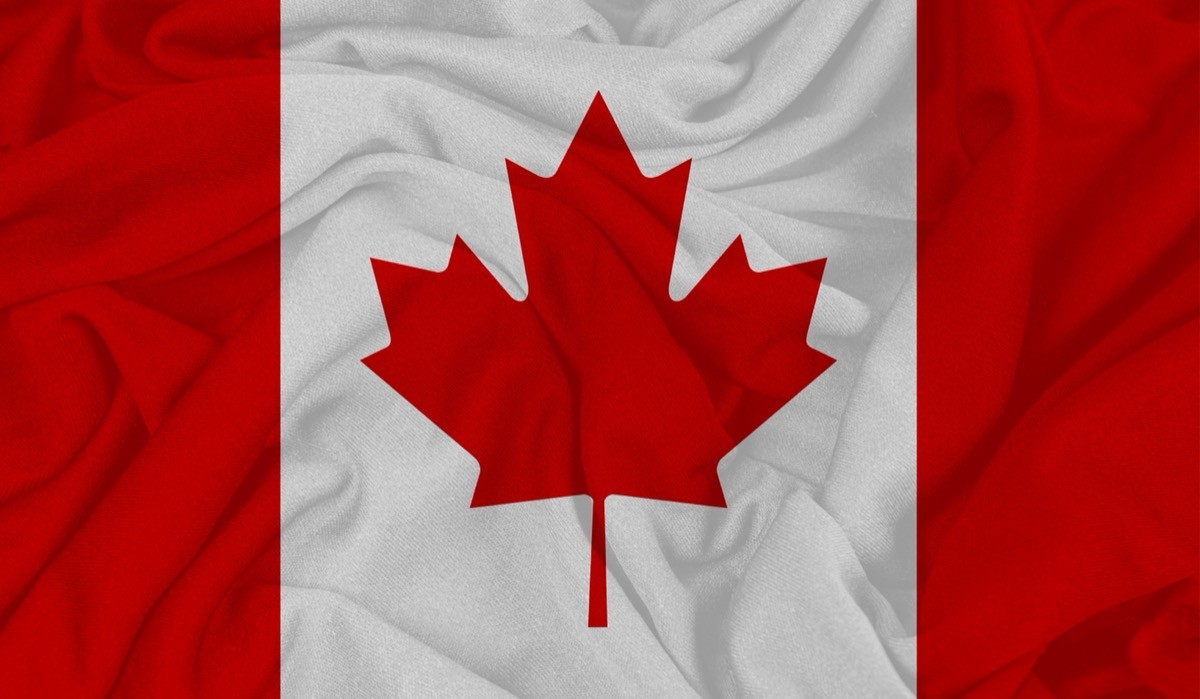
You might’ve believed Thanksgiving was purely American, but it’s celebrated in Canada, too. Instead of the last Thursday in November, however, it falls on the second Monday of every October. It was first held in 1872 to celebrate the medical recovery of the Prince of Wales from a fever that had “fill[ed] the minds of all loyal subjects with the deepest anxiety,” according to The Perth Gazette and West Australian Times. And that’s why our neighbors to the north give thanks!
17. Before 1997, there were no size regulations on Macy’s Thanksgiving Day Parade balloons.
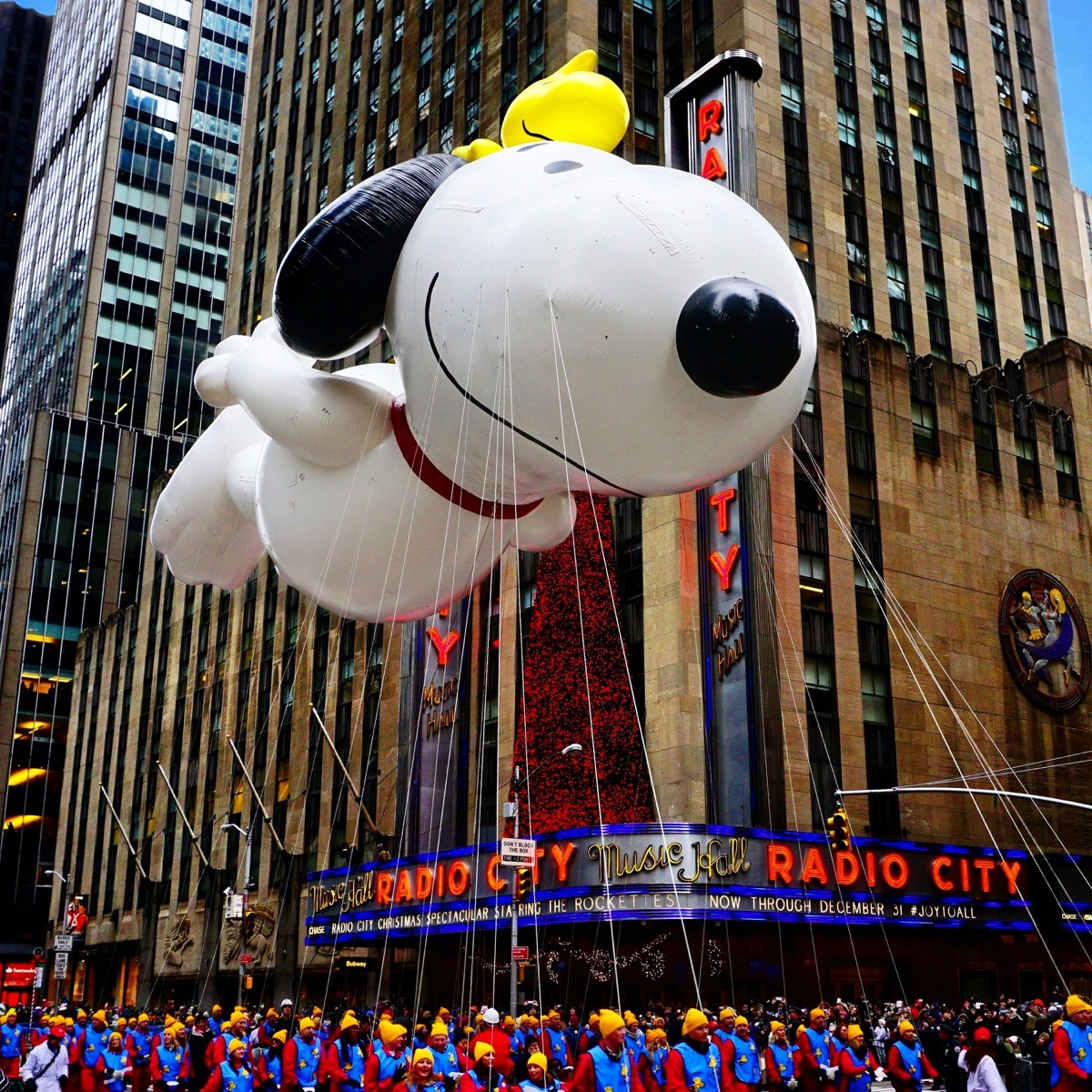
In 1997, the Barney balloon was ripped along its abdomen due to strong winds, while the Pink Panther had to be stabbed by police in order to be stabilized, Esquire shared. But the worst event occurred when the Cat in the Hat balloon struck a lamppost at 72nd Street and then crumpled to the ground.
In response to 1997’s calamities, organizers of the parade instituted size regulations that required all balloons to be no larger than 70 feet high, 78 feet long, and 40 feet wide.
18. About 28 million people watch the Macy’s Thanksgiving Day Parade.
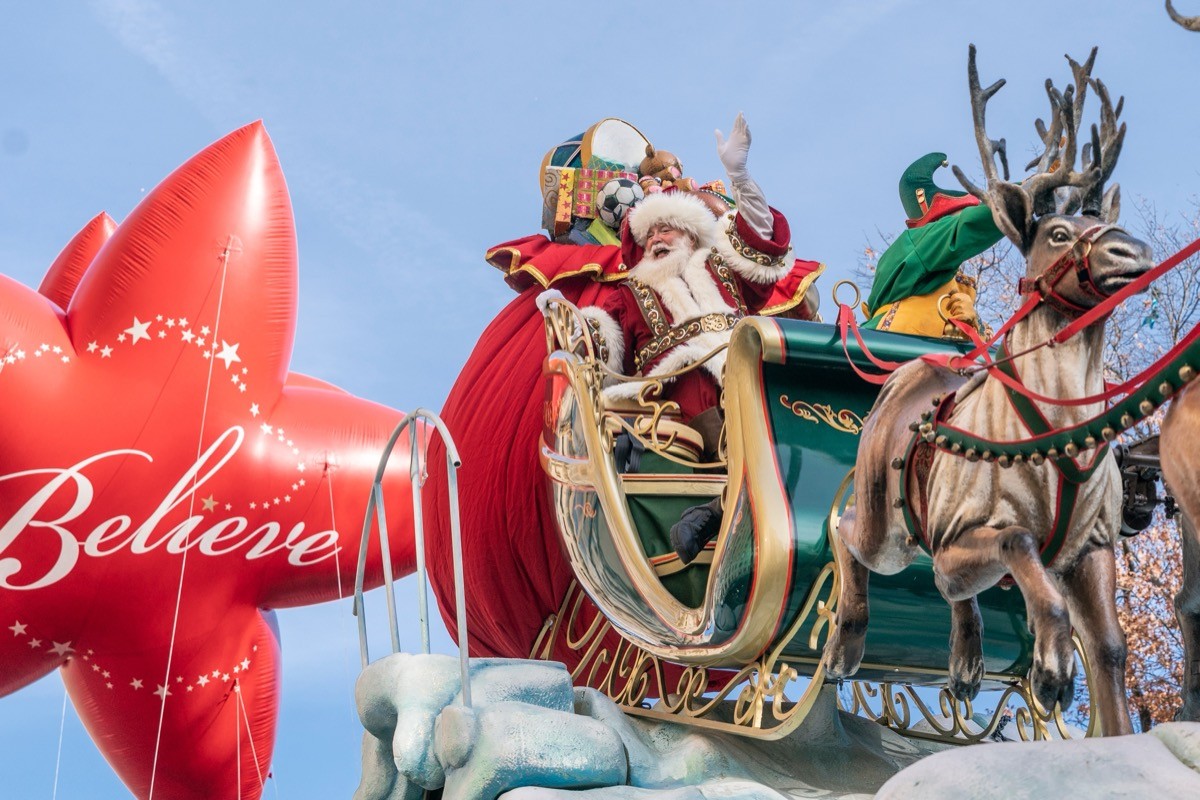
Last year, for the 97th annual Macy’s Thanksgiving Day Parade, 28.5 million people watched the event on TV, setting a record, as The Hollywood Reporter shared. (A couple more fun facts: The parade was first broadcast on the radio in 1932 and on television for the first time in 1948.)
Another 3.5 million people view it in person, and roughly 10,000 participate. And though the parade doesn’t begin until 9 a.m. ET, many spectators arrive as early as 6:30 a.m., lining the streets of New York to get a spot along the route.
19. More people travel to Orlando, Florida, than anywhere else on Thanksgiving.
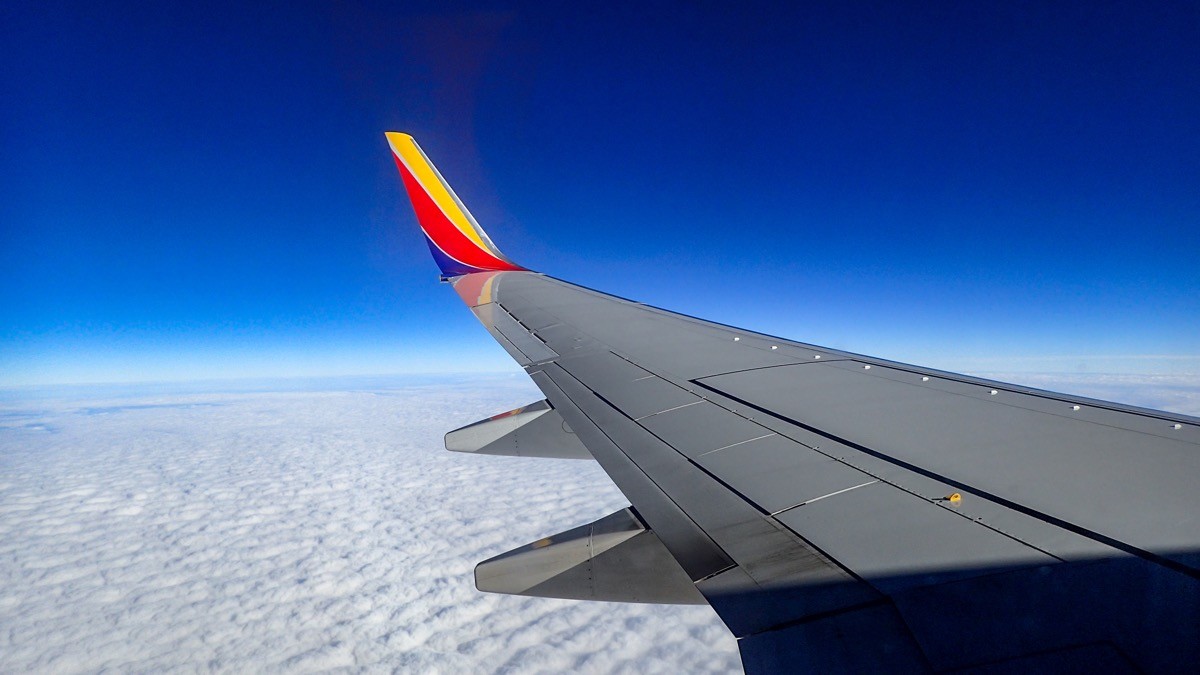
According to estimates by AAA, 79.9 million travelers will head 50 miles or more from home over the 2024 Thanksgiving holiday travel period. And the three most popular destinations are all in sunny Florida—Orlando, Miami, and Fort Lauderdale.
20. The original TV dinner was the result of a Thanksgiving miscalculation.
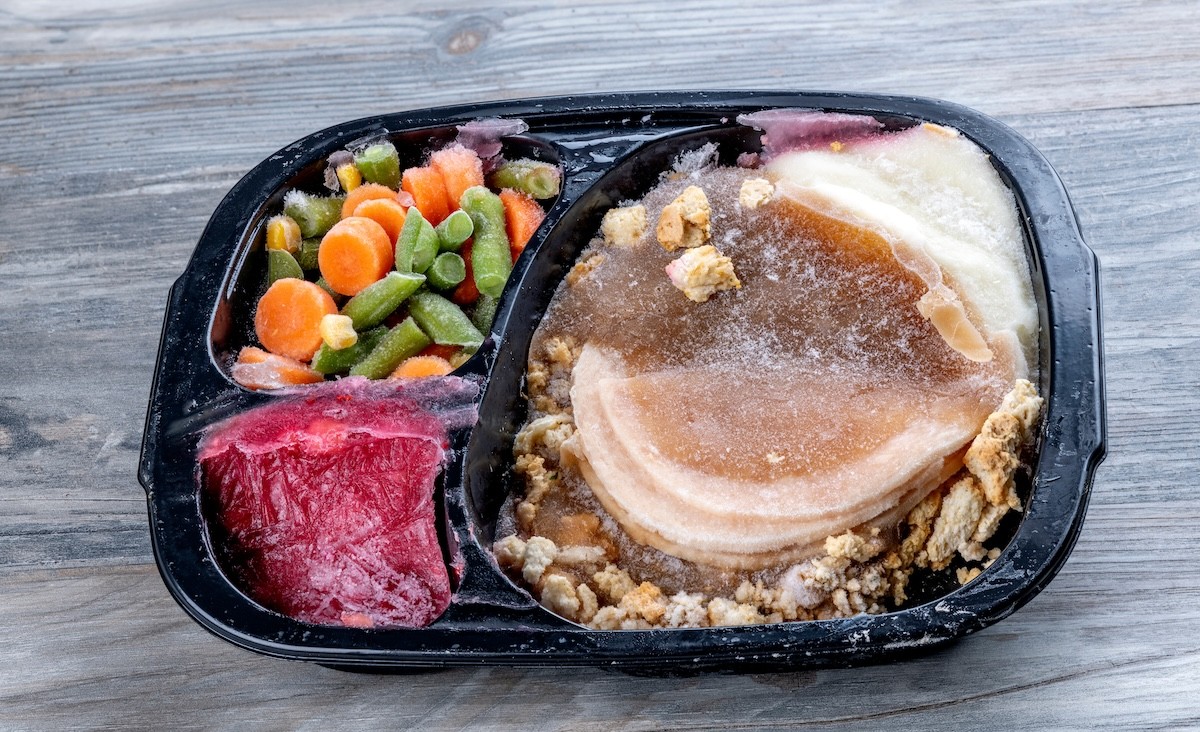
In 1953, an executive at Swanson miscalculated the company’s upcoming Thanksgiving turkey sales, leaving the company with some 260 tons of frozen fowl following the holiday, Smithsonian Magazine reported.
Fortunately for Swanson, a salesman named Gerry Thomas suggested packaging the excess product into trays—along with some traditional sides—and selling them to consumers as TV dinners. Thomas was apparently inspired by the pre-portioned trays used to serve airplane food.
RELATED: Mind-Blowing Facts About Turkeys You Definitely Didn’t Know.
21. Seventy percent of Americans prefer Thanksgiving leftovers to the meal.
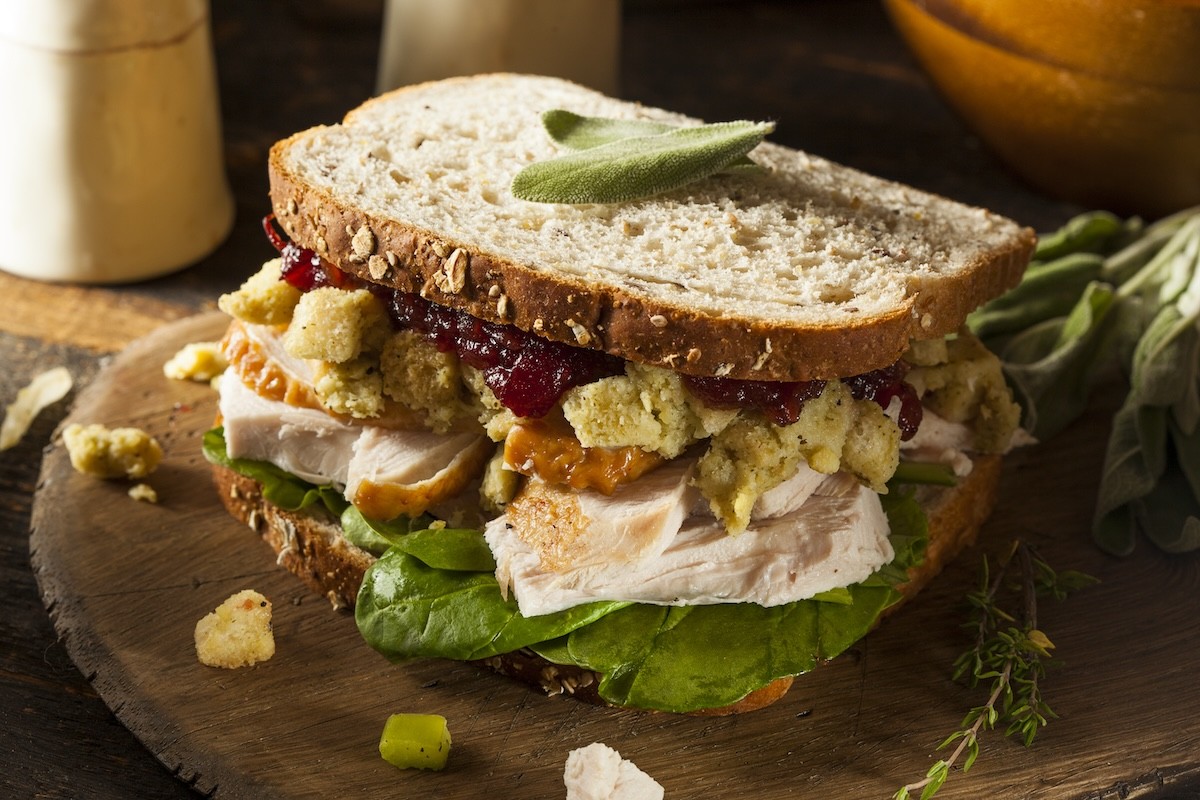
According to a 2021 survey commissioned by Stasher Bags, most Americans (two-thirds of all participants) prefer the leftovers of the Thanksgiving meal to the meal itself. Another finding: Most people prefer slapping their leftovers into a sandwich to how the food was originally served.
22. The turkey isn’t to blame for your post-dinner slump.

A widely accepted myth will have you believe that it’s the main dish of the meal that makes you eager for a nap after you eat Thanksgiving dinner. But it’s time to stop blaming the turkey and its tryptophan for your sluggishness. Though the amino acid does help your body produce melatonin, which promotes relaxation and sleep, turkey doesn’t have any more of it than its poultry brethren. So why the immediate desire to nod off?
“Large amounts of carbohydrates from Thanksgiving staples like potatoes and bread, and the extra insulin your body makes to process a big meal,” can cause drowsiness, WebMD notes.
23. A Connecticut town delayed Thanksgiving because of a pumpkin pie shortage.
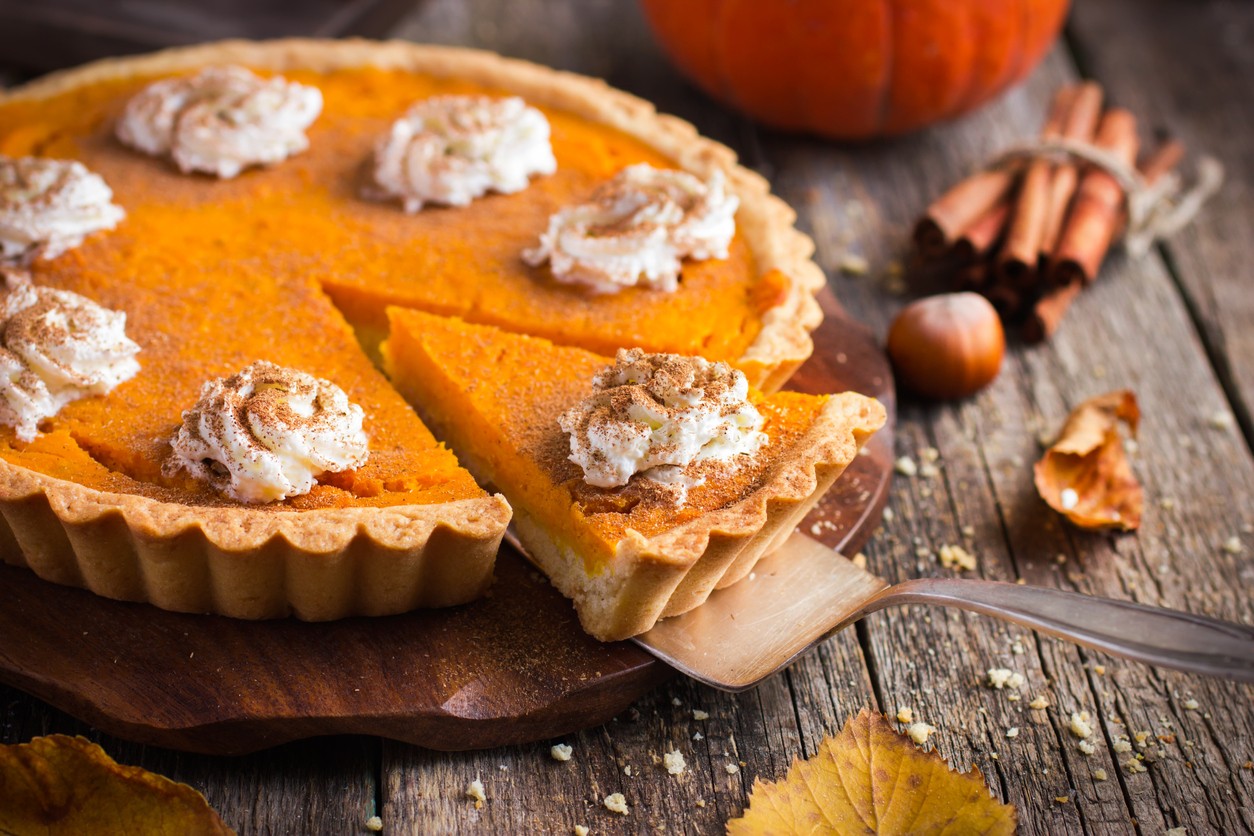
Well, sort of. Pumpkin pies were a popular Thanksgiving dessert in New England early in the 18th century, becoming more synonymous with the holiday across the country in the early 20th. But according to History.com, the town of Colchester in Connecticut agreed to postpone the holiday a week when a molasses shortage threatened their ability to make the gourd-based sweet.
24. Two towns in Texas claim to be the site of the first Thanksgiving.
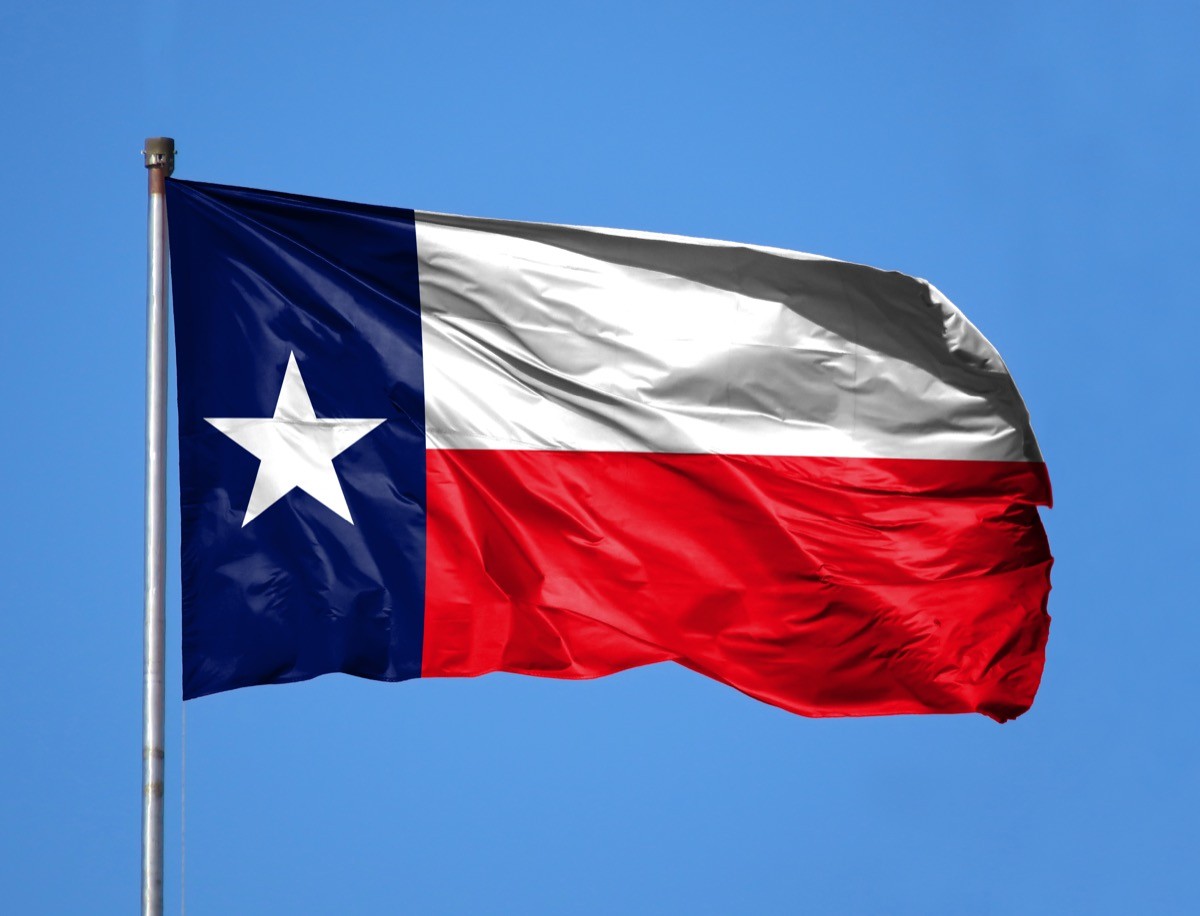
While the “first Thanksgiving” is generally considered to be that aforementioned meal in 1621 in Plymouth, Massachusetts, there are at least two towns in Texas claiming to have been the site of earlier Thanksgiving feasts.
El Paso, for one, claims it was host to a day of giving thanks celebrated by the Spanish explorer Juan de Oñate in 1598. The town has been observing that Thanksgiving every April since 1989.
Another claim, made by The Texas Society of Daughters of the American Colonists, asserts that the first Thanksgiving was observed by Spanish explorer Francisco Vázquez de Coronado and his expedition in Palo Duro Canyon in 1541. Researchers, however, have since uncovered details to suggest otherwise.
25. The first national Thanksgiving was declared by George Washington.
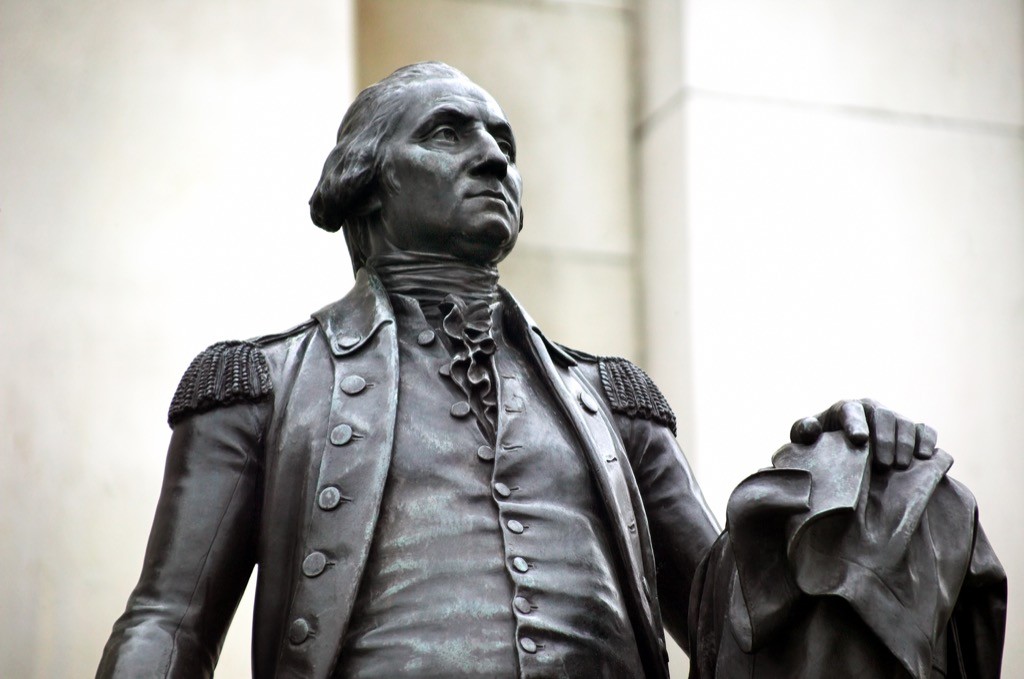
The first national Thanksgiving was declared by President George Washington and celebrated on Nov. 26, 1789. In his “Thanksgiving Proclamation of 1789,” Washington defined the day as a pious time to thank God for, among other things, protecting Americans and helping them achieve independence.
RELATED: 13 Fun Thanksgiving Games Perfect for the Whole Family.
26. Turkeys are named after the country—the result of confusion about birds.
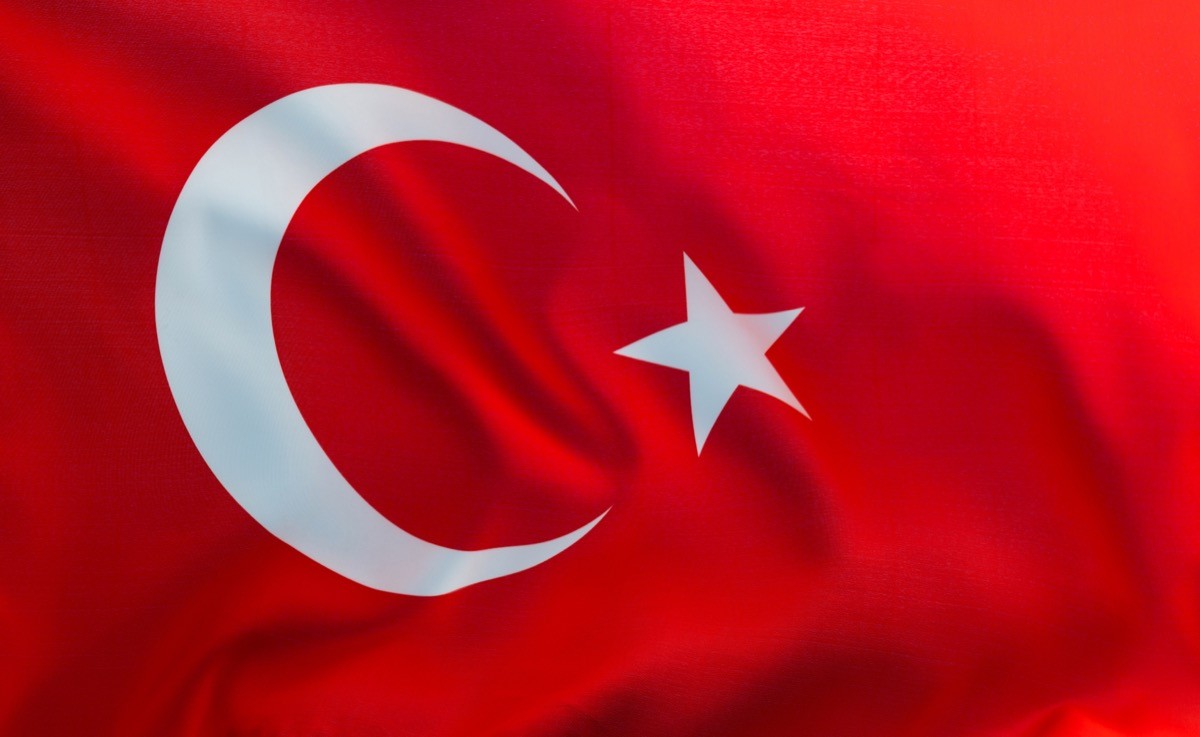
During the time of the Ottoman Empire, guinea fowl—birds that closely resemble turkeys—were often imported from their native North Africa to Europe to be eaten. Because Europeans received them from Turkish traders, they referred to them as turkey-hens or turkey-cocks.
When settlers from the Americas began sending what we call turkeys back to their European counterparts, there was confusion about the resemblance, with them being referred to by the same name. Thus, we have turkeys!
27. Minnesota raises the most turkeys in the U.S.
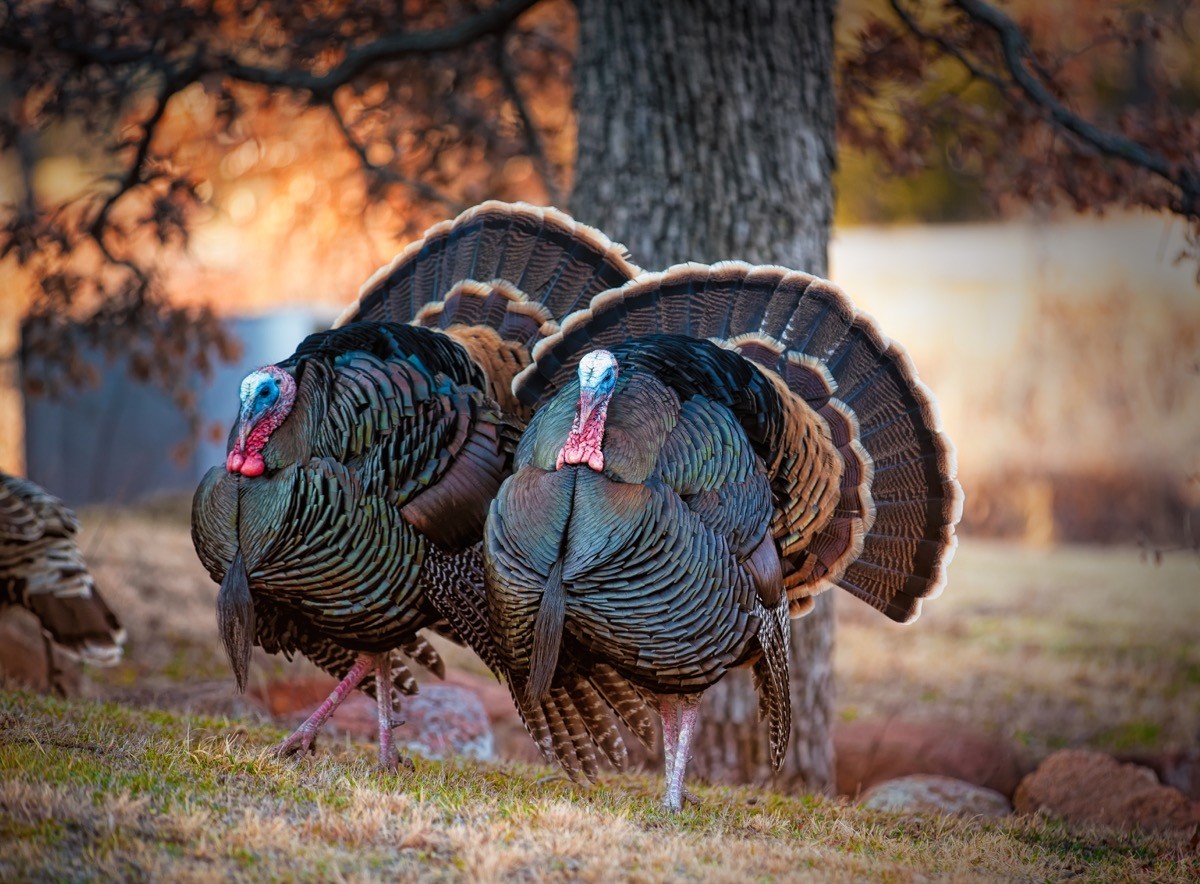
Turkeys apparently prefer cold temperatures and friendly neighbors: Of all U.S. states, Minnesota raised the most turkeys in 2023 (38.5 million birds), according to the USDA. In fact, the 450 turkey farms in the state are responsible for about 18 percent of all turkeys raised and sold in the United States yearly.
While Minnesota has long been near the top of the rankings of domestic turkey producers since record-keeping began in 1929, they’ve taken the number-one spot since North Carolina slowed production in 2003.
28. The first Thanksgiving “football” game predates the NFL.
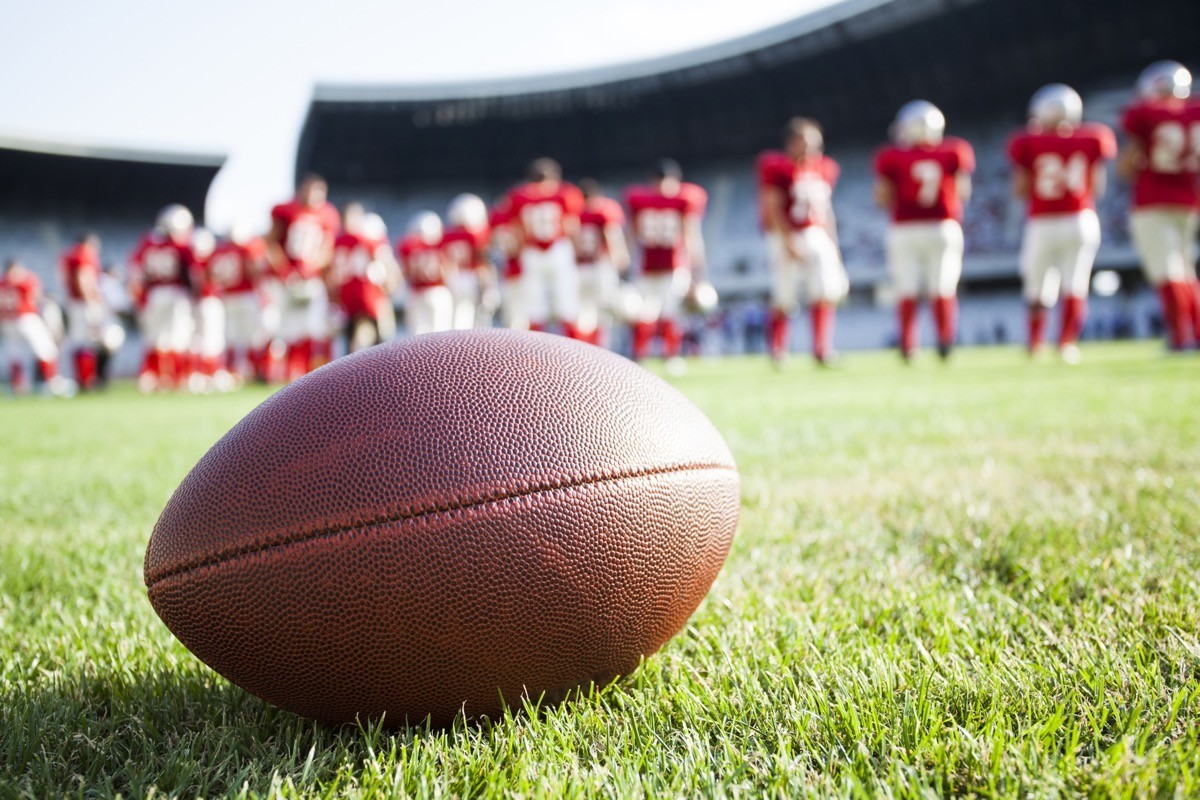
According to the Princeton website, on Thanksgiving in 1876, Princeton and Yale students squared off in Hoboken, New Jersey, playing “what would best be described as an 11-on-11 form of rugby.” The schools’ showdown became an annual one, eventually moving to New York, where 40,000 fans showed up in 1893.
29. The tradition of cracking the wishbone is an ancient one.
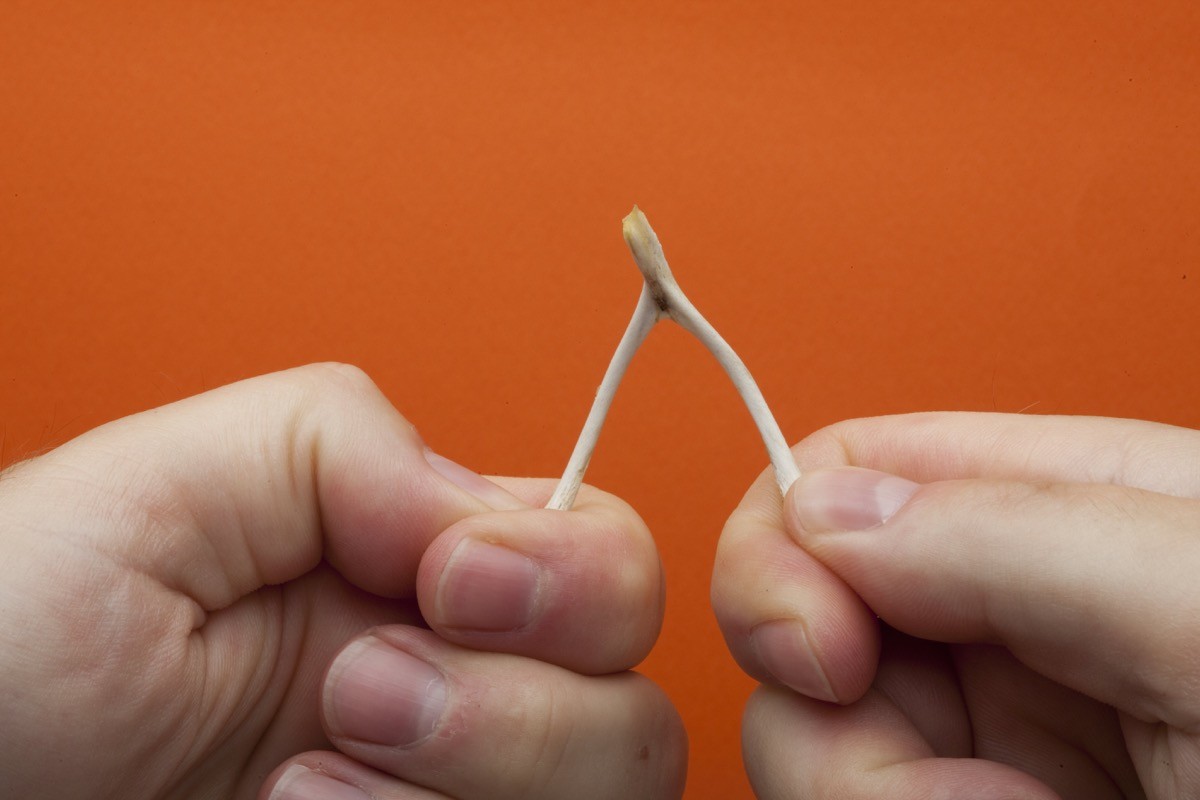
For some, Thanksgiving dinner isn’t complete until the bird’s wishbone is snapped, bestowing luck on the bearer of the bigger piece. But would you believe this custom is thousands of years older than the holiday?
According to Mental Floss, wishing on bird bones traces back to the ancient Etruscans, who used chickens to help them predict the future. After the chickens died, the Etruscans would dry their wishbones—or furcula—in the sun and keep them as good luck charms.
30. The first Turkey Trot took place in 1896.

Thanks to the popularity of the turkey trot, in 2015, Thanksgiving surpassed July 4th as the most popular day of the year to run a race, Runner’s World reports. But this tradition was a long time in the making.
Believe it or not, as Runner’s World shares, the first-ever turkey trot occurred in 1896 in Buffalo, New York. Hosted by the local YMCA, the 8K cross-country race on Thanksgiving Day attracted just six runners, only four of whom crossed the finish line.